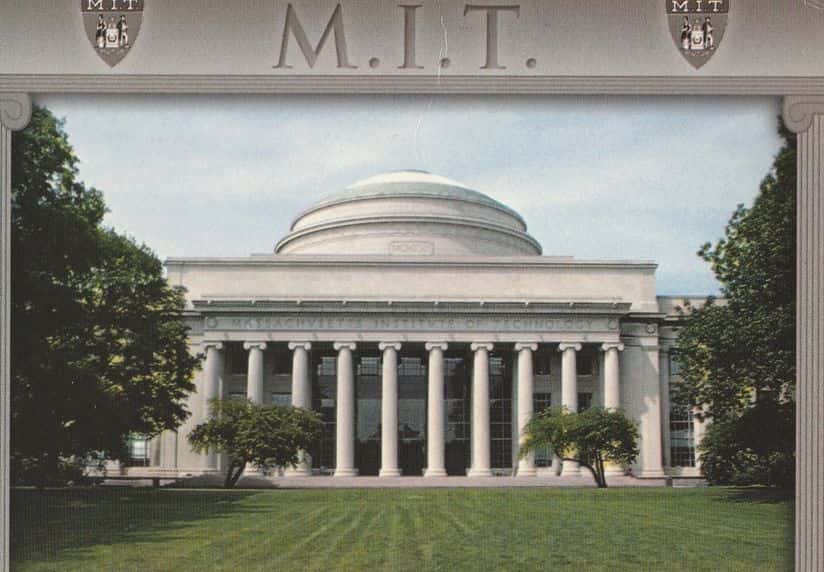If you have been looking for updated information about the MIT transfer acceptance rate; this article will solve that problem, and even offer more information about the MIT transfer application deadline, tuition, and application deadline.
Thousands of domestic and international students apply for transfer admission to MIT every year. MIT accepts only a few students with the required GPA and test scores.
Those who were transferred to MIT are applicants who have shown they are worthy candidates for admission.
It’s a dream for thousands of applicants to transfer to the Massachusetts Institute of Technology. But, who gets into MIT through transfer admission and what are the academic qualifications required?


About Massachusetts Institute of Technology
The Massachusetts Institute of Technology is one of three private land-grant universities in the U.S.
Established in 1861, MIT was founded as an institution in response to the industrialization of the U.S. and adopted a European polytechnic university model.
According to Wikipedia, the private land grant research university is located in Cambridge, Massachusetts and currently has an enrolment of over 11,000 undergraduate and graduate students.
Since its inception, the Massachusetts Institute of Technology has played an important role in various areas of modern science and technology.
Also Read: NYU Stern ED Acceptance Rate
MIT Transfer Acceptance Rate
As one of the world’s renowned institutions, MIT receives thousands of applications during admission. Getting into MIT is very challenging as the private university only accepts a few students from a large applicant pool.
Undergraduate admission is quite selective at MIT and so is transfer admission. Transfer admission is even more competitive at MIT compared to undergraduate admission.
During the Fall term of 2021, the Massachusetts Institute of Technology received a total of 1,437 transfer applications. The number of transfer applicants that were admitted to MIT was just 24 students.
MIT’s transfer acceptance rate in that admission year was 1.67%, which is more selective than the undergraduate admission rate.
According to MIT, its transfer admission process is extremely selective, even more so than undergraduate admission.
They announced that over the last few years, out of 35 to 50 transfer applications submitted for the spring term, they only admitted from 0 to 5.
For the fall term, MIT has only admitted 15 to 20 transfer applicants from an applicant of 400 to 500. This shows how competitive transfer admission to MIT is.
What Is MIT GPA Requirements for Transfer Admission?
According to MIT, there is no required GPA for transfer applicants. However, competitive candidates for transfer admission usually present a GPA of 3.5 or above.
MIT also states that competitive applicants mostly have A’s in their maths and science courses.
Transfer Eligibility
MIT transfer acceptance rate will only be important to you if you are a student who is eligible to apply for transfer admission.
So, who does MIT consider a transfer applicant?
You are eligible to apply for transfer admission to MIT if you have already graduated from high school and completed at least one year of college. Students who are still in high school are ineligible to apply for transfer admission to MIT.
They can only apply for first-year admission and MIT will gladly accept their application for review.
MIT Transfer Admission Requirements
A good GPA and more A’s, especially in math and sciences courses will make you a worthy candidate for transfer admission to MIT.
One Application per Entry Year
The Massachusetts Institute of Technology will only allow transfer applicants to submit one application entry year.
This means if you apply to enter MIT in the spring term, you cannot reapply for transfer admission for the fall term in the same calendar year. For example, if you apply for transfer admission to MIT for the spring of 2024, you cannot reapply for the fall term of 2024.
This is because the spring and fall terms occur in the same entry year.
All international applicants seeking transfer admission to MIT can apply for the fall (September) entry only.
Also Read: Stanford University Acceptance Rate 2024, Admissions, SAT/ACT, GPA, Tuition
Evaluation
The Massachusetts Institute of Technology requires two academic evaluations from college professors or instructors. MIT strongly recommend that one of the evaluations be from either a math or science instructor.
Official Transcripts
All transfer applicants to MIT are required to upload a copy of their transcripts from each college attended. High school official transcripts are also included and these transcripts are only required for transfer applicants who are admitted into MIT and choose to enrol.
School Official Report
All transfer applicants to MIT are required to present a school official report from their registrar, advisor, or another school official.
The university encourages all transfer applicants to use the electronic form built into the school transfer application to request their school’s official report.
Standardized Tests
The Massachusetts Institute of Technology requires the SAT and ACT for first-year and transfer applicants.
MIT do not accept the ACT writing section or the SAT optional essay but it accepts the paper and digital SAT. Get more information about MIT’s updated testing requirements here.
MIT Transfer Application
The Massachusetts Institute of Technology transfer application for spring entry is due October 15.
Transcripts: All transfer applicants must present copies of their transcripts from high school, college or university attended. Official transcripts should be uploaded within the university’s transfer application.
Standardized Tests: All spring entry applicants are required to take a test by the October test date. Fall entry applicants will also take a test by the March test date.
Application Fee: MIT application fee is $75 but applicants who may find it difficult to pay the fee can request a fee waiver.
Also Read: Harvard University Acceptance Rate 2024, Admissions, SAT/ACT, GPA, Tuition
Massachusetts Transfer Deadline
Spring Entry
- The spring semester application deadline is mid-October.
- By mid-November, applicants for the spring semester will receive admission decision notifications.
- Mid-December is the deadline for enrollment for admitted spring semester students.
Fall Entry
- The fall semester application deadline is March 15.
- By early May, all transfer applicants for the fall semester will receive admission decision notifications.
- Early June is the deadline for enrollment for admitted students for the fall semester.
The Massachusetts Institute of Technology Tuition
Below is the estimated cost of attendance at the Massachusetts Institute of Technology.
| Tuition | |
| $59,590 | 2022–2023 tuition (9 months) |
| $19,390 | Housing and Meals |
| $3,184 | Books and Personal Expenses |
Frequently Asked Questions
Below are frequently asked questions about the transfer acceptance rate at MIT.
What GPA do you need for MIT?
Currently, MIT has no required GPA for transfer applicants. However, competitive candidates for transfer admission usually present a GPA of 3.5 or above.
What is the acceptance rate for MIT?
The Massachusetts Institute of Technology currently has an acceptance rate of 3.95%, which is extremely selective.
Also Read: University of Chicago Acceptance Rate 2024, Admission, SAT/ACT, GPA, Tuition
Is it easier to get into MIT as a transfer applicant?
First-year admission is less competitive compared to transfer admission to MIT. MIT’s transfer acceptance rate is 1.67%, more selective than the undergraduate admission rate of 3.95%.
What GPA do I need to transfer to MIT?
On average, you need a GPA of 3.5 or higher if you intend to transfer to MIT as a transfer applicant.
Conclusion
MIT is a renowned private research university with a reputable background. Although admission to MIT is selective for both undergraduate and transfer admission, attending this private university is worth the investment.
We hope this article on the MIT transfer acceptance rate was helpful.
Recommendations
- Princeton University Acceptance Rate 2024, Admissions, SAT/ACT, GPA, Tuition
- Cornell University Acceptance Rate 2024, Admissions, SAT/ACT, GPA, Tuition
- Clark University Acceptance Rate 2024, Admissions, SAT/ACT, GPA, Tuition
- Columbia University Acceptance Rate 2024, Admissions, SAT/ACT, GPA, Tuition
- Yale University Acceptance Rate 2024, Admissions, SAT/ACT, GPA, Tuition
References
- MITAdmission: Transfer eligibility
- CollegeTransition: MIT Transfer Acceptance Rate
- MITAdmission: What does MIT consider for transfer admission?

Leave a Reply